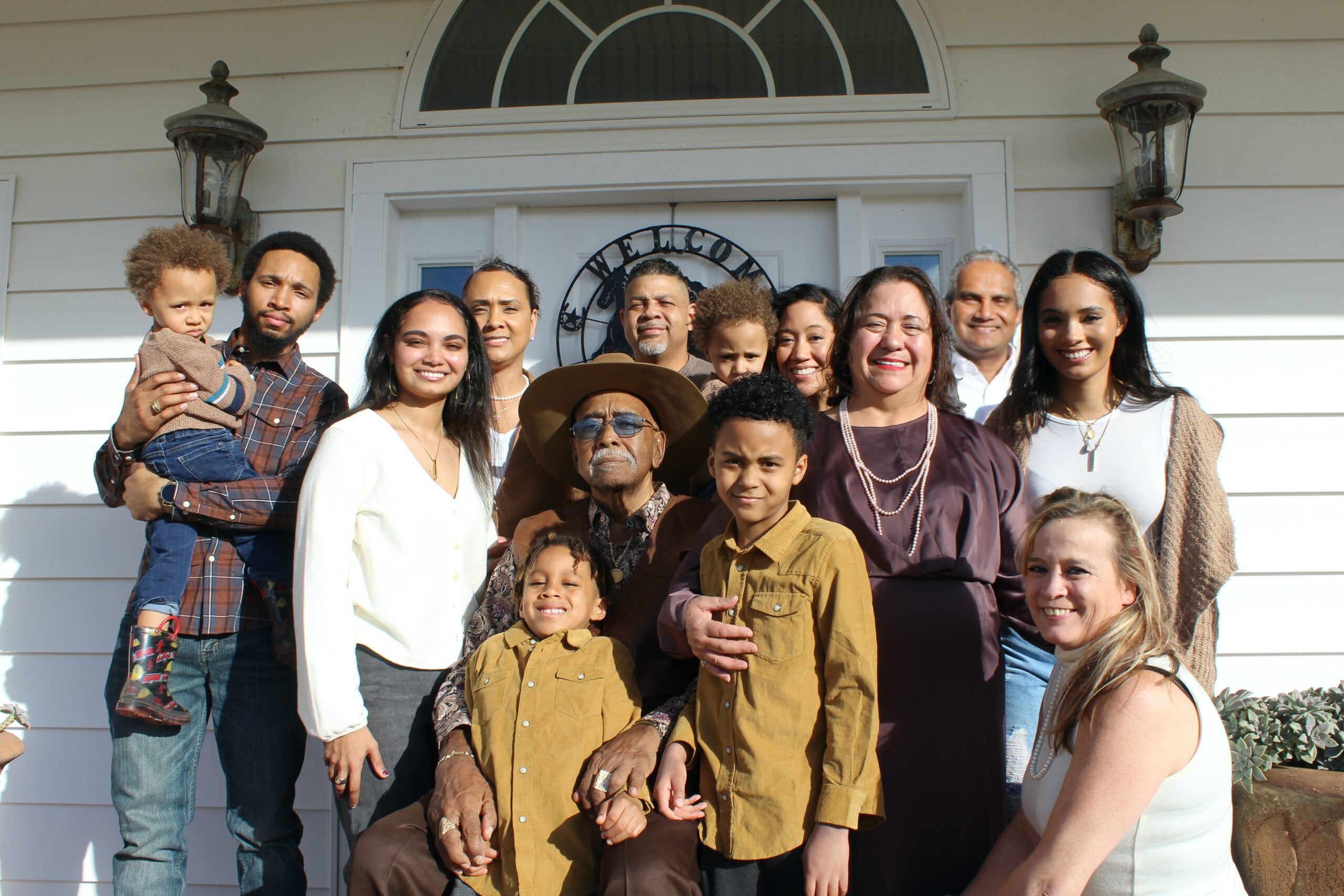-
Place of Birth
California
-
Tribal Affiliation
Region 6 - Shabtau
-
Surname Heritage
Netherlands / England / Ireland / Germany / Scotland
Smith History, Family Crest & Coats of Arms

Smith is an Anglo-Saxon name. The name was originally given to a metalworker (the blacksmith). It is derived from the Old English word smid, probably derived form “smitan,” which meant “to strike with a hammer.” As metal worker was such a common and important profession in Medieval times, this name and its cognates are extremely widespread throughout the British Isles and Europe. However, there is some debate as to why the occupation of blacksmith would lead to such a populous surname. One might expect that Farmer, also an occupational name, but with far more people involved in the profession in the Middle Ages, would today be a much more populous surname than Smith. It is probably a futile exercise to try to establish a single source for this amazing, monumentally prolific surname.
Early Origins of the Smith family
The surname Smith was first found in Durham, in present day Northumbria (North-Eastern England) where an Olde English version of the name is cited in circa 975, almost 100 years before the Normans would invade this part of England.
Some of the family moved to Mount Thoydon in Essex. “The church [of Mount Thoydon] is a handsome edifice, containing many fine monuments to the family of Smyth, among which is one to Sir Thomas Smyth, chancellor of the garter, and principal secretary of state, in the reigns of Edward VI. and Elizabeth.” [1]
“Wootton Hall [in Wooton-Wawen, Warwickshire] was early the seat of the Smythe family, of whom was Lord Carrington, who, at the battle of Edge-Hill, bravely redeemed the royal standard, as is recorded on his monument in Christ-Church, Oxford. Over the front entrance of the Hall are the arms, finely executed in relief, of Lord Carrington. ” [1]
“The extensive manor of Mitchell-Morton, which stretches into the parishes of Kilkhampton, Moorwinstow, and Jacobstow, in Cornwall, and Week St. Pancras in Devonshire, is generally denominated from this parish. This large manor belonged, about the year 1660, to the family of Smith.” [2]
Early History of the Smith family
This web page shows only a small excerpt of our Smith research.
Smith Spelling Variations
One relatively recent invention that did much to standardize English spelling was the printing press. However, before its invention even the most literate people recorded their names according to sound rather than spelling. The spelling variations under which the name Smith has appeared include Smith, Smyth, Smythe and others.
Early Notables of the Smith family (pre 1700)
Notables of this surname at this time include: Richard Smith (1568-1655), officially the Bishop of Chalcedon, the second Catholic bishop for England, Wales and Scotland after Catholicism was banned in England in 1559; John Smith (c. 1608-1657), an English politician who sat in the House of Commons from 1640 to 1644, supported the Royalist cause in the English Civil War; John Smith (died 1663) English-born immigrant to the Massachusetts Bay Colony c. 1631, 3rd President of the Colony of Rhode Island and Providence Plantations (1649-1650), 6th President of Providence and Warwick (1652-1653); William Smyth (died 1658), Doctor of Divinity (DD).
Smith World Ranking
In the United States, the name Smith is the 1st most popular surname with an estimated 2,501,922 people with that name. [3] However, in Canada, the name Smith is ranked the 1stmost popular surname with an estimated 192,145 people with that name. [4] And in Quebec, Canada, the name Smith is the 178th popular surname. [5] Newfoundland, Canada ranks Smith as 3rd with 1,521 people. [6] France ranks Smith as 861st with 5,920 people. [7] Australia ranks Smith as 1st with 212,493 people. [8] New Zealand ranks Smith as 1st with 13,667 people. [9]The United Kingdom ranks Smith as 1st with 566,946 people. [10] Netherlands ranks Smith as 347th with 4,490 people. [11] South Africa ranks Smith as 22nd with 125,534 people. [12]
 Migration of the Smith family to Ireland
Migration of the Smith family to Ireland
Some of the Smith family moved to Ireland, but this topic is not covered in this excerpt.
L
Smith migration to the United States +
At this time, the shores of the New World beckoned many English families that felt that the social climate in England was oppressive and lacked opportunity for change. Thousands left England at great expense in ships that were overcrowded and full of disease. A great portion of these settlers never survived the journey and even a greater number arrived sick, starving, and without a penny. The survivors, however, were often greeted with greater opportunity than they could have experienced back home. These English settlers made significant contributions to those colonies that would eventually become the United States and Canada. An examination of early immigration records and passenger ship lists revealed that people bearing the name Smith arrived in North America very early:
Smith Settlers in United States in the 17th Century
- Mr. John Smith, who arrived in Virginia in 1611 aboard the ship “Elizabeth” [13]
- Mr. William Smith, who arrived in Virginia in 1618 aboard the ship “Sampson” [13]
- Mr. John Smith, who arrived in Virginia in 1619 aboard the ship “Bona Nova” [13]
- Osmond Smith, who arrived in Virginia in 1620 [14]
- Capt.John Smith, British settler who arrived in Virginia in 1620 aboard the ship “Abigaile” [15]
Smith Settlers in United States in the 18th Century
- Elinor Smith, who landed in Virginia in 1704 [14]
- John William Smith, aged 14, who landed in New York in 1711 [14]
- Crispianus Smith, who landed in Virginia in 1712 [14]
- Augustine Smith, who arrived in Virginia in 1713 [14]
- Ambrose Joshua Smith, who arrived in Virginia in 1714 [14]
Smith Settlers in United States in the 19th Century
- Charles R Smith, who arrived in New York in 1801 [14]
- Jenny Smith, aged 26, who arrived in New York, NY in 1803 [14]
- Jeremiah Smith, who arrived in Allegany (Allegheny) County, Pennsylvania in 1803 [14]
- M E Smith, who landed in Pennsylvania in 1804 [14]
- Matt Smith, who arrived in America in 1805 [14]
Smith Settlers in United States in the 20th Century
- Joe Smith, who landed in Arkansas in 1904 [14]
- Jens Nissen Smith, who arrived in Wisconsin in 1914 [14]
- Charles Victor Smith, who landed in Alabama in 1918 [14]
- Christian Anholm Smith, who landed in Wisconsin in 1922 [14]
- Agnes Sybil Smith, aged 26, who arrived in Colorado in 1948 [14]
Some of the first settlers of this family name were:
Smith Settlers in Canada in the 17th Century
- Peter Smith, who arrived in Newfoundland in 1689 [16]
Smith Settlers in Canada in the 18th Century
- James Smith, who arrived in Halifax, Nova Scotia in 1749-1752
- James Smith, who arrived in Nova Scotia in 1749
- Constantine Smith, who arrived in Nova Scotia in 1749
- Mark Smith, who arrived in Nova Scotia in 1749
- Martha Smith, who landed in Nova Scotia in 1750
Smith Settlers in Canada in the 19th Century
- Donald Smith, who landed in Nova Scotia in 1801
- James Smith, who landed in Canada in 1812
- John Smith, who arrived in Canada in 1812
- Neil Smith, who arrived in Red River, Canada in 1812
- Michael Hayden Smith, who arrived in Canada in 1812
Smith Settlers in Canada in the 20th Century
- Miss M A Smith, who landed in Saint John, New Brunswick in 1907
Emigration to Australia followed the First Fleets of convicts, tradespeople and early settlers. Early immigrants include:
Smith Settlers in Australia in the 18th Century
- Mrs. Ann Smith, (nee Overy), (b. 1750), aged 37, English convict who was convicted in Winchester for theft, transported aboard the “Charlotte” on 13th May 1787, arriving in New South Wales, Australia, she was moved to the Charlotte, she died in 1837 [17]
- Miss Hannah Smith, (b. 1758), aged 29, English convict who was convicted in Gloucester. Glouceser Quarter Sessions for 7 years for stealing, transported aboard the “Charlotte” on 13th May 1787, arriving in New South Wales, Australia, she died in 1826 [17]
- Mr. William Smith, (b. 1755), aged 32, English convict who was convicted in Dorchester Assizes for 7 years for burglary, transported aboard the “Charlotte” on 13th May 1787, arriving in New South Wales, Australia, he died in 1830 [17]
- Mr. John Smith, English convict who was convicted in Worcester, Worcestershire, Englandfor 7 years, transported aboard the “Barwell” in September 1797, arriving in New South Wales, Australia [18]
- Mr. John Smith, English convict who was convicted in London, England for 7 years, transported aboard the “Barwell” in September 1797, arriving in New South Wales, Australia[18]
Smith Settlers in Australia in the 19th Century
- Mr. James Smith, (Oldfield), (b. 1780), aged 20, English rope maker who was convicted in Nottingham, Nottinghamshire, England for 14 years, transported aboard the “Earl Cornwallis” in August 1800, arriving in New South Wales, Australia, he died in 1824 [19]
- Mr. James Smith, British Convict who was convicted in London, England for 7 years, transported aboard the “Earl Cornwallis” in August 1800, arriving in New South Wales, Australia [19]
- Mr. John Smith, British Convict who was convicted in Middlesex, England for life, transported aboard the “Earl Cornwallis” in August 1800, arriving in New South Wales, Australia [19]
- Mr. Robert Smith, British Convict who was convicted in London, England for 7 years, transported aboard the “Earl Cornwallis” in August 1800, arriving in New South Wales, Australia [19]
- Miss. Ann Smith, Irish convict who was convicted in Dundalk, Ireland for 7 years, transported aboard the “Atlas” on 29th November 1801, arriving in New South Wales, Australia [20]
Smith Settlers in Australia in the 20th Century
- “Miss Hannah Smith, (b. 1810), aged 18, English servant who was convicted in Nottingham, Nottinghamshire, England for 7 years for stealing, transported aboard the “”Competitor”” on 9th June 1828, arriving in New South Wales, Australia” [21]
- “Miss Maria Smith, (b. 1806), aged 22, English needle woman who was convicted in Middlesex, England for life for house breaking, transported aboard the “”Competitor”” on 9th June 1828, arriving in New South Wales, Australia” [21]
- “Miss Mary Ann Smith, (b. 1806), aged 22, English servant who was convicted in Middlesex, England for life for stealing, transported aboard the “”Competitor”” on 9th June 1828, arriving in New South Wales, Australia, daughter of Ann Rolph” [21]
Smith migration to New Zealand +
Emigration to New Zealand followed in the footsteps of the European explorers, such as Captain Cook (1769-70): first came sealers, whalers, missionaries, and traders. By 1838, the British New Zealand Company had begun buying land from the Maori tribes, and selling it to settlers, and, after the Treaty of Waitangi in 1840, many British families set out on the arduous six month journey from Britain to Aotearoa to start a new life. Early immigrants include:
Smith Settlers in New Zealand in the 19th Century
- Mr. Michael Smith, Australian settler travelling from Hobart, Tasmania, Australia aboard the ship “Bee” arriving in New Zealand in 1831 [22]
- Mr. Samuel Smith, Australian settler travelling from Hobart, Tasmania, Australia aboard the ship “Bee” arriving in New Zealand in 1832 [22]
- Mr. John Smith, Cornish settler travelling from Launceston, UK aboard the ship “Brazil Packet” arriving in Hokianga, North Island, New Zealand in 1836 [22]
- Charles Smith, who landed in Bay of Islands, New Zealand in 1836
- William Smith, who landed in Bay of Islands, New Zealand in 1836
Smith migration to West Indies +
The British first settled the British West Indies around 1604. They made many attempts but failed in some to establish settlements on the Islands including Saint Lucia and Grenada. By 1627 they had managed to establish settlements on St. Kitts (St. Christopher) and Barbados, but by 1641 the Spanish had moved in and destroyed some of these including those at Providence Island. The British continued to expand the settlements including setting the First Federation in the British West Indies by 1674; some of the islands include Barbados, Bermuda, Cayman Island, Turks and Caicos, Jamaica and Belize then known as British Honduras. By the 1960’s many of the islands became independent after the West Indies Federation which existed from 1958 to 1962 failed due to internal political conflicts. After this a number of Eastern Caribbean islands formed a free association. [23]
Smith Settlers in West Indies in the 17th Century
- Mr. Daniell Smith, (b. 1614), aged 20, British settler travelling from London, UK arriving in St Christopher (St. Kitts) on 5th January 1634
- Mr. Thomas Smith, (b. 1617), aged 17, British settler travelling from London, UK arriving in St Christopher (St. Kitts) on 5th January 1634
- Mr. Thomas Smith, (b. 1613), aged 21, British settler travelling from Gravesend, UK aboard the ship “Hopewell” arriving in Barbados on 17th February 1634 [14]
- Mr. Alexander Smith, (b. 1616), aged 18, British settler travelling from Gravesend, UK aboard the ship “Hopewell” arriving in Barbados on 17th February 1634 [14]
- Mr. Daniell Smith, (b. 1538), aged 96, British settler travelling from Gravesend, UK aboard the ship “Hopewell” arriving in Barbados on 17th February 1634 [14]
Contemporary Notables of the name Smith (post 1700) +
- Kathryn Elizabeth “Kate” Smith (1907-1986), American singer and recipient of the Presidential Medal of Freedom, best known for her rendition of Irving Berlin’s “God Bless America”
- Willard Carroll “Will” Smith Jr. (b. 1968), American actor, rapper, and film producer nominated for five Golden Globe Awards and two Academy Awards, and has won four Grammy Awards, best known for The Fresh Prince, as well as blockbuster movies The Pursuit of Happyness, I, Robot and Bad Boys
- James Smith (1719-1806), of Pennsylvania, one of the signers of the American Declaration of Independence
- Kieran Smith (b. 2000), American swimmer, who won bronze at the 2020 Olympic Games
- Ralph Allon “Catfish” Smith Sr. (1938-2023), American NFL football end who played eight seasons for the Philadelphia Eagles (1962–1964), the Cleveland Browns (1965–1968), and the Atlanta Falcons (1969)
- Shelley Smith (1952-2023), American fashion model and actress, known for For Love and Honor (1983), Magnum, P.I. (1980) and Simon & Simon (1981)
- Finis Dean Smith (1932-2023), American track and field athlete and stuntman, and winner of the gold medal in the 4 × 100 m relay at the 1952 Summer Olympics, inducted into the Texas Rodeo Cowboy Hall of Fame in 2006
- Marshall S. Smith (1937-2023), American educator at Harvard University, the University of Wisconsin at Madison, and Stanford University
- Chris Smith (1992-2023), American NFL professional football defensive end who played from 2014 to 2023; he died on April 17, 2023, at the age of 31
- Walter Laws “Wally” Smith (1926-2023), British-born American mathematician, known for his contributions to applied probability theory
Historic Events for the Smith family +
The motto was originally a war cry or slogan. Mottoes first began to be shown with arms in the 14th and 15th centuries, but were not in general use until the 17th century. Thus the oldest coats of arms generally do not include a motto. Mottoes seldom form part of the grant of arms: Under most heraldic authorities, a motto is an optional component of the coat of arms, and can be added to or changed at will; many families have chosen not to display a motto.
Motto: Benigno Numine
Motto Translation: By Divine Providence.


